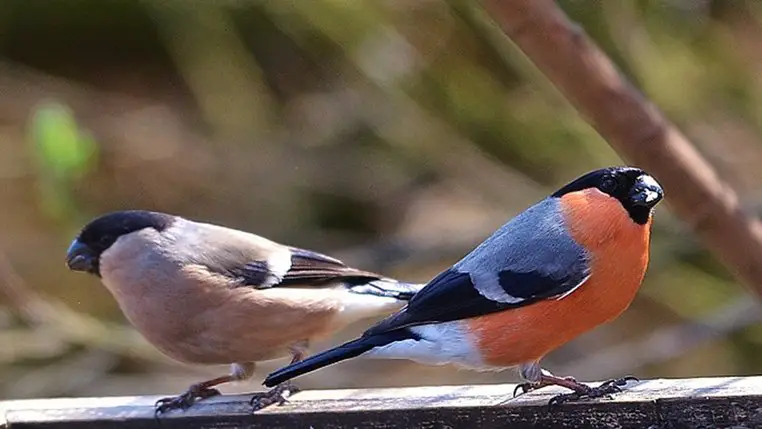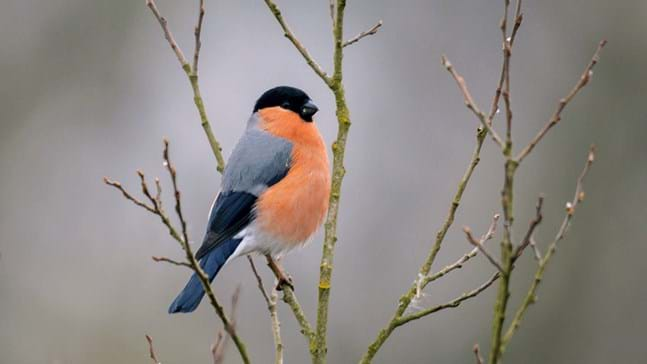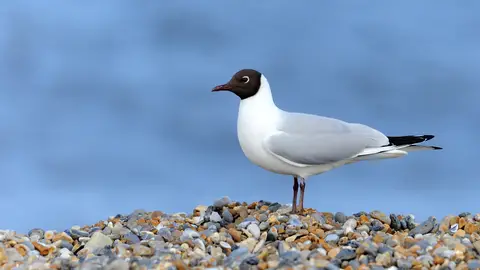You might be surprised to learn that a single bullfinch can consume up to 2,000 seeds in a single day, making them a crucial player in shaping their ecosystems. As you explore the world of these fascinating birds, you’ll discover how their feeding habits have a ripple effect on plant populations and vegetation composition. But there’s more to the bullfinch’s importance than just seed dispersal – their presence also serves as a canary in the coal mine, indicating the health of their habitats and the environment as a whole. What other vital roles do bullfinches play, and why should you care about their well-being?
Key Takeaways
- Bullfinches maintain ecological balance by regulating plant species populations and influencing vegetation composition through their feeding behavior.
- They facilitate seed dispersal and propagation, contributing to diverse plant communities, and act as biological agents controlling weed populations.
- Bullfinches serve as indicators of environmental health, reflecting habitat integrity and signaling changes in air quality and water purity.
- They occupy a unique position in food webs, controlling plant species populations and maintaining ecosystem resilience through their selective feeding behavior.
- Conservation efforts are necessary to protect bullfinch populations, which are threatened by habitat fragmentation, destruction, climate change, pesticide use, and human-made structures.
Ecological Balance Maintenance
In maintaining ecological balance, bullfinches play a crucial role alongside other species in their ecosystems, particularly in regulating the growth of certain plant species.
As you explore the intricate relationships within ecosystems, you’ll find that bullfinches occupy a unique position in food webs. By controlling the populations of specific plant species, they prevent any one species from dominating the ecosystem.
This, in turn, maintains ecosystem resilience, allowing the ecosystem to withstand disturbances and adapt to changes.
You’ll notice that bullfinches primarily feed on seeds, fruits, and buds, which affects the composition of vegetation in their habitats.
By consuming seeds, they prevent the spread of invasive species, while their fruit consumption helps to disperse nutrients throughout the ecosystem.
This selective feeding behavior influences the structure and diversity of plant communities, ultimately shaping the ecosystem’s overall character.
Through their feeding activities, bullfinches contribute to the dynamic balance of their ecosystems, ensuring that no single species gains supremacy.
Seed Dispersal and Propagation

As bullfinches forage for seeds, fruits, and buds, their feeding activities have a direct impact on seed dispersal and propagation. You might wonder how this process unfolds. During fruit consumption, bullfinches ingest seeds, which then pass through their gut. The gut passage process can alter the seed’s germination potential, either enhancing or reducing it.
| Seed Type | Gut Passage Effect | Germination Potential |
|---|---|---|
| Soft-fruited seeds (e.g., rowan, hawthorn) | Enhanced germination | Increased |
| Hard-fruited seeds (e.g., cherry, plum) | Reduced germination | Decreased |
| Wind-dispersed seeds (e.g., birch, alder) | No significant effect | Unchanged |
This complex interaction between bullfinches and seeds highlights the significance of their role in seed dispersal and propagation. By consuming fruits and subsequently depositing seeds in new locations, bullfinches facilitate the spread of plant species. This process contributes to the maintenance of diverse plant communities, which in turn support a wide range of ecosystem services.
Weed Population Control Methods
By influencing seed dispersal and propagation, bullfinches inadvertently contribute to shaping plant communities, which, in turn, affect weed populations.
As you explore the role of bullfinches in weed population control, you’ll find that their impact is multifaceted.
- Reduced weed seed banks: By consuming weed seeds, bullfinches limit the number of seeds available for germination, thereby reducing weed populations.
- Shifts in plant community composition: As bullfinches disperse seeds, they alter the composition of plant communities, which can lead to a decrease in weed dominance.
- Biological agents: Bullfinches can act as biological agents, controlling weed populations by consuming weed seeds and reducing their propagation.
- Alternative to chemical alternatives: By relying on bullfinches as a natural method of weed control, you can reduce the need for chemical alternatives, which can harm the environment.
Environmental Health Indicators
Throughout ecosystems, bullfinches serve as indicators of environmental health, reflecting the integrity of their habitats through their population trends, behavior, and physiology.
You can think of them as canaries in the coal mine, signaling changes in air quality and water purity. As you monitor bullfinch populations, you’ll notice that changes in their numbers or behavior often precede broader environmental issues.
For instance, a decline in bullfinch populations may indicate poor air quality, which can have devastating effects on human health. Similarly, changes in water purity can impact the availability of food resources for bullfinches, leading to shifts in their population dynamics.
By studying bullfinch populations, you can gain valuable insights into the overall health of an ecosystem. This information can inform conservation efforts and help mitigate the impacts of environmental degradation.
As you work to understand the complex relationships between bullfinches and their habitats, you’ll uncover the importance of these birds as environmental health indicators.
Conservation Status and Threats

The bullfinch’s conservation status is a pressing concern, with its populations facing numerous threats that imperil its very survival.
As you delve into the world of bullfinch conservation, you’ll discover that human activities are a primary driver of the decline.
Habitat fragmentation, for instance, has led to the isolation of bullfinch populations, making it difficult for them to maintain genetic diversity.
- Habitat destruction and fragmentation: The clearance of woodlands and hedgerows has resulted in the loss of breeding and foraging grounds.
- Human-induced climate change: Changes in temperature and precipitation patterns disrupt the bullfinch’s food supply and breeding cycles.
- Pesticide use: The widespread application of pesticides has been linked to declines in insect populations, a crucial food source for bullfinches.
- Collisions with human-made structures: Bullfinches are prone to colliding with windows, wind turbines, and other man-made structures, leading to mortality.
FAQs: Bullfinch
What Is the Average Lifespan of a Bullfinch in the Wild?
You’ll find that the average lifespan of a bullfinch in the wild ranges from 2-5 years, heavily influenced by habitat factors like food availability and nesting conditions, as well as climate influences such as harsh winters and droughts.
Do Bullfinches Make Good Pets?
You’ll find bullfinches can make decent pets if you’re willing to meet their socialization requirements, but be aware that they’re high-maintenance birds requiring frequent attention and large aviaries; plus, color mutations can be rare and costly.
What Is the Best Food to Attract Bullfinches to My Garden?
You’ll attract bullfinches to your garden by offering their favorite foods, such as sunflower seeds and fruit from trees like cherry or rowan. Install suet feeders, filled with high-energy suet cakes, to provide a nutritious supplement during winter months.
Can Bullfinches Be Found in Urban Areas?
You’d think bullfinches thrive in lush countryside, but surprisingly, they can adapt to urban habitats, frequenting city dwellings with berry-rich shrubs, and even exploiting food sources like suburban gardens, like yours, if you provide the right fare.
Do Bullfinches Migrate or Are They Resident Birds?
You find that bullfinches are partial migrants, with some populations making short-distance movements to winter ranges, while others remain resident, influencing population dynamics and regional abundance.
Conclusion
As you gaze out at the natural world, remember that the bullfinch’s delicate song is a symphony of ecological balance. Their presence is a thread that weaves together the tapestry of diverse plant communities, keeping weeds in check and ecosystems resilient. But, like a canary in the coal mine, their declining numbers sound a warning: our environment is fragile, and their silence would be deafening. It’s time to act, for the bullfinch’s fate is inextricably tied to our own.













